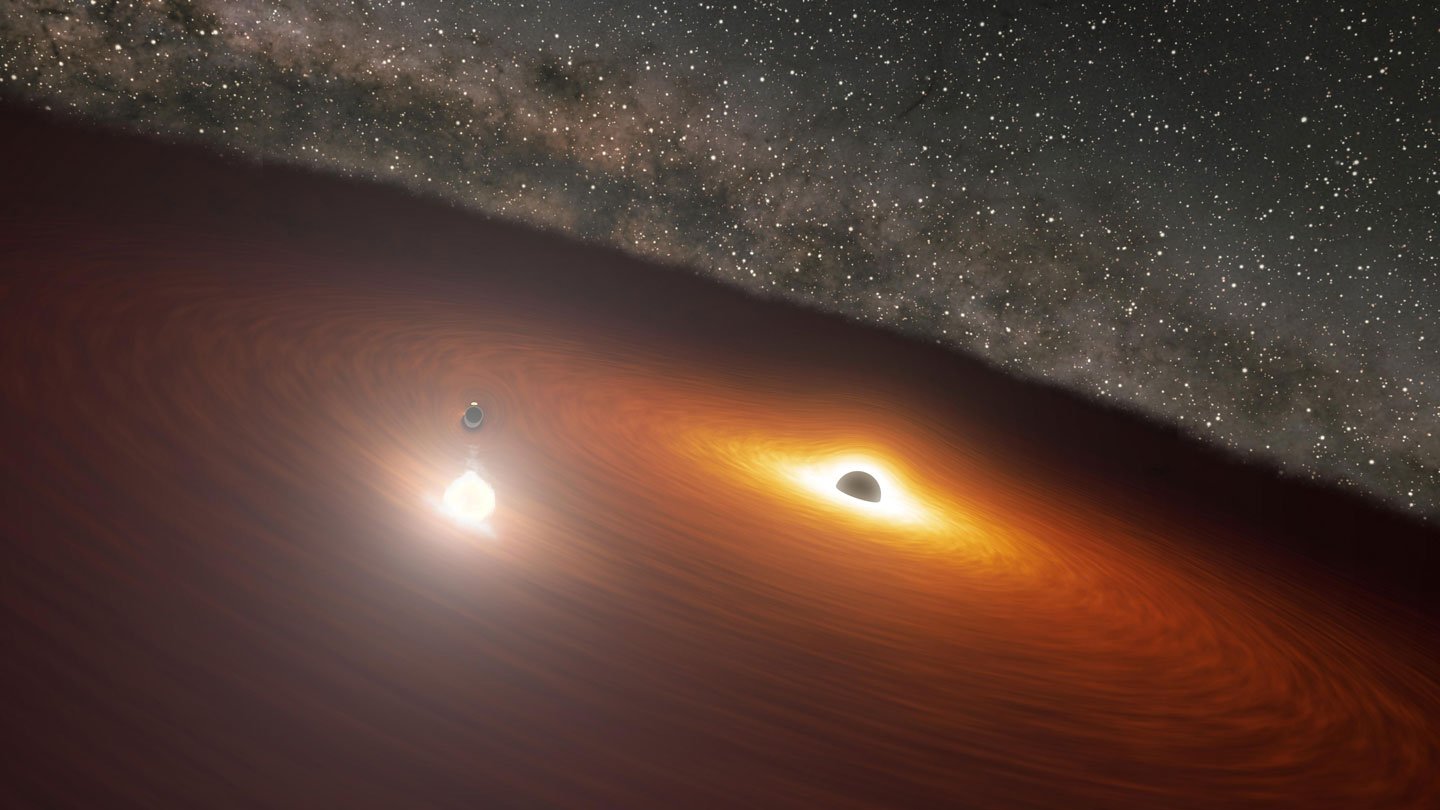A smaller companion likely orbits a monstrously massive black hole every 12 years in a distant galaxy. But no one has ever found that little partner.

It’s possible that a long-rumored black hole has finally surfaced. A smaller companion likely orbits a monstrously massive black hole every 12 years in a distant galaxy. But no one has ever found that little partner. Astronomers now assert to have witnessed the first direct light flash from the smaller black hole.
At a June 7 meeting of the American Astronomical Society in Albuquerque, astronomer Mauri Valtonen declared, “We’ve never seen anything like this before.”
Since the 1880s, when it appeared as a brilliant point of light in a survey of asteroids, astronomers have been keeping an eye on this object.
That object, now known as OJ287, is a blazar. Blazars are supermassive black holes that radiate bright jets of radiation into space, and those jets just so happen to point almost directly at Earth, making them among the brightest-looking objects in the universe. About 3.5 billion light-years separate us from this one.
OJ287 occasionally shines even more brightly than usual. Astronomers have noted that the object undergoes a sharp increase in brightness every 11 to 12 years for the past 40 years or so.
In 1996, Valtonen and Harry Lehto of the University of Turku in Finland proposed that the outbursts might be caused by a massive black hole orbiting another black hole that was even more powerful.
The smaller black hole has a mass of about 150 million solar masses, while the larger one has a mass of about 18 billion solar masses, according to the astronomers’ calculations. For perspective, the black hole in the center of the Milky Way is about 4 million solar masses.
The larger black hole is believed to be encircled by a disc of white-hot gas and dust that glows at a wide range of light wavelengths. Every time the smaller black hole ploughs through that disc, a flash of light would be produced, explaining the periodic outbursts.
This animation displays a flash of light produced when a smaller supermassive black hole in the blazar OJ287 collides with the gas and dust disc encircling the larger black hole it orbits.
But until now, no light had been detected from the second black hole itself. Its presence was merely inferred from those regular flares.
Valtonen and his colleagues predicted that the most recent flare should arrive in January or February 2022 and arranged to monitor OJ287 every day using telescopes on Earth and in space. The team saw flares like the ones they had seen before, but there was a new flare that was different. It was bright and quick, fading after one night.
The team proposed that this flare came from a jet created by the smaller black hole pulling material out of the disk as it approached, before the collision.
Valtonen explained that OJ287 swallows disk matter, which falls into the secondary black hole, causing a huge flare. Previous observations missed the flare due to its short duration, but the team observed it for the first time in 2022 due to bad weather.
Alternative ways for a single black hole to emit the same light pattern have been proposed by researchers. The first direct observation of the second black hole has been made.
This discovery might open up a new area of study for secondary jets in binary black hole systems. Astronomers can now recognise other binary black holes if they produce similar flashes as the smaller black hole travels across the larger one’s disc.
Based on observations by Maur, Caltech astronomer Seppo Laine proposes a second black hole that supports the supermassive black hole binary model.
This interpretation is a significant improvement even though it hasn’t been fully verified. Given that the brief flares only happen once every ten years, testing the two black holes may be difficult. The two black holes could be resolved directly by a radio telescope in space.